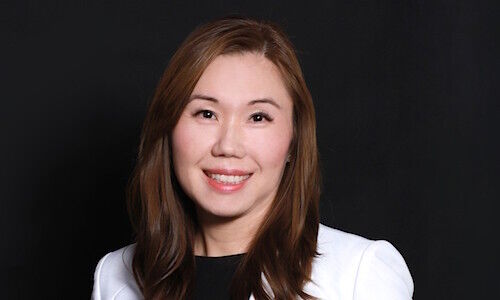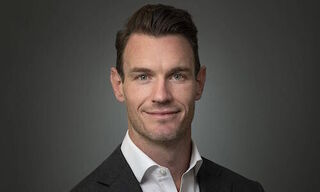Roman von Ah: «Is It Possible to Invest Sustainably in Gold?
In economically uncertain times, gold's hour has come. But gold and gold are no longer the same since investors have been making additional demands on the heavy bars with the dominance of ESG issues, Roman von Ah writes in an essay on finews.first.
This article is published on finews.first, a forum for authors specialized in economic and financial topics.
The criticism of gold investments is timeless: they bring neither interest nor dividends. However, the protection against inflation is high. This relationship is not linear, as a long-term perspective shows: If you have been disappointed by the development of the gold price in recent years, look at the development of a Chevrolet: In 1940, a «Chevy’s» price was 659 dollars, which corresponded to 19.1 ounces of gold.
Today, 19.1 ounces of gold are worth about 35,000 dollars: with that amount, you can buy a decent car again, which is technically much better; even an electric car can be had for that. Gold has thus compensated for inflation over the entire period and has retained its purchasing power.
No wonder, quite a few large pension funds have recently included a certain gold quota in their investment strategy. In many respects, gold exudes a magical aura in our society. If this is perceived, among other things, as protection in times of crisis, it should not be overlooked.
«No one wants to have anything to do with blood diamonds or dirty gold»
Gold is therefore an important addition to a balanced portfolio: Inflation of 3.5 percent per year halves the value of money every 20 years. With the sharp increase in inflation, investment instruments that protect against value destruction are in demand.
Considering climate change, the reputation of precious metals is also under critical scrutiny: No one wants to have anything to do with blood diamonds or dirty gold. This has often discouraged investors from including in their portfolios precious metals whose origin could not be proven beyond doubt. Innovative market participants have demonstrated how this reservation can be overcome by launching sustainable gold funds.
«This gold is not only traceable but also ESG-compatible»
This is to be achieved by the complete traceability of each bar along the entire value chain – from mining in the mine to production, melting down and transport to the bank vault, the gold is kept separate from normal gold, each step controlled by an independent auditing body.
The «Green Gold» bars produced in the canton of Ticino in Switzerland meet these characteristics. In addition to traceability, they differ from standard bars in that they meet further requirements in addition to internationally recognized minimum specifications: This gold is not only traceable but also ESG-compatible. This relates in particular to sustainability, for example through a proof of an environmental management system, an environmental impact statement and a reclamation plan.
«Green Gold is a premium brand within industrial gold mining»
These must be in place before the mine is put into operation. Furthermore, through the obligation to comply with international OECD standards that go far beyond the minimum requirements. These include employee rights or no corruption. Compliance with all these requirements is ensured by audits carried out by independent institutions. Currently, only six mines from the USA and Australia are used for Green Gold. Unlike ETFs and other securities that track indices, Green Gold introduces a new level of transparency.
With a current capitalization of $3,000 billion, gold is indeed a niche investment. But thanks to a low correlation with other asset classes as well as the hedging function in times of crisis, gold offers excellent diversification features. Green Gold is a premium brand within industrial gold mining, and gold bars with Swiss minting are a premium product. Gold bars have the potential as an investment for all.
Roman von Ah is the founding partner, managing director and a member of the board of Swiss Rock Asset Management. He is a lecturer at the Swiss training center for experts in capital investment (AZEK). Previously, he was a member of the Group Executive Board of the Julius Baer Group (Head of Asset Management and Fund Business) and nine years on the Executive Board of Swissca Group (now Swisscanto).
Previous contributions: Rudi Bogni, Peter Kurer, Rolf Banz, Dieter Ruloff, Werner Vogt, Walter Wittmann, Alfred Mettler, Robert Holzach, Craig Murray, David Zollinger, Arthur Bolliger, Beat Kappeler, Chris Rowe, Stefan Gerlach, Marc Lussy, Nuno Fernandes, Richard Egger, Maurice Pedergnana, Marco Bargel, Steve Hanke, Urs Schoettli, Ursula Finsterwald, Stefan Kreuzkamp, Oliver Bussmann, Michael Benz, Albert Steck, Martin Dahinden, Thomas Fedier, Alfred Mettler, Brigitte Strebel, Mirjam Staub-Bisang, Nicolas Roth, Thorsten Polleit, Kim Iskyan, Stephen Dover, Denise Kenyon-Rouvinez, Christian Dreyer, Kinan Khadam-Al-Jame, Robert Hemmi, Anton Affentranger, Yves Mirabaud, Katharina Bart, Frédéric Papp, Hans-Martin Kraus, Gerard Guerdat, Mario Bassi, Stephen Thariyan, Dan Steinbock, Rino Borini, Bert Flossbach, Michael Hasenstab, Guido Schilling, Werner E. Rutsch, Dorte Bech Vizard, Adriano B. Lucatelli, Katharina Bart, Maya Bhandari, Jean Tirole, Hans Jakob Roth, Marco Martinelli, Thomas Sutter, Tom King, Werner Peyer, Thomas Kupfer, Peter Kurer, Arturo Bris, Frederic Papp, James Syme, Dennis Larsen, Bernd Kramer, Armin Jans, Nicolas Roth, Hans Ulrich Jost, Patrick Hunger, Fabrizio Quirighetti, Claire Shaw, Peter Fanconi, Alex Wolf, Dan Steinbock, Patrick Scheurle, Sandro Occhilupo, Will Ballard, Nicholas Yeo, Claude-Alain Margelisch, Jean-François Hirschel, Jens Pongratz, Samuel Gerber, Philipp Weckherlin, Anne Richards, Antoni Trenchev, Benoit Barbereau, Pascal R. Bersier, Shaul Lifshitz, Klaus Breiner, Ana Botín, Martin Gilbert, Jesper Koll, Ingo Rauser, Carlo Capaul, Claude Baumann, Markus Winkler, Konrad Hummler, Thomas Steinemann, Christina Boeck, Guillaume Compeyron, Miro Zivkovic, Alexander F. Wagner, Eric Heymann, Christoph Sax, Felix Brem, Jochen Moebert, Jacques-Aurélien Marcireau, Ursula Finsterwald, Claudia Kraaz, Michel Longhini, Stefan Blum, Zsolt Kohalmi, Karin M. Klossek, Nicolas Ramelet, Søren Bjønness, Andreas Britt, Gilles Prince, Salman Ahmed, Stephane Monier, and Peter van der Welle, Ken Orchard, Christian Gast, Jeffrey Bohn, Juergen Braunstein, Jeff Voegeli, Fiona Frick, Stefan Schneider, Matthias Hunn, Andreas Vetsch, Fabiana Fedeli, Marionna Wegenstein, Kim Fournais, Carole Millet, Swetha Ramachandran, Brigitte Kaps, Thomas Stucki, Neil Shearing, Claude Baumann, Tom Naratil, Oliver Berger, Robert Sharps, Tobias Mueller, Florian Wicki, Jean Keller, Niels Lan Doky, Karin M. Klossek, Johnny El Hachem, Judith Basad, Katharina Bart, Thorsten Polleit, Bernardo Brunschwiler, Peter Schmid, Karam Hinduja, Zsolt Kohalmi, Raphaël Surber, Santosh Brivio, Mark Urquhart, Olivier Kessler, Bruno Capone, Peter Hody, Andrew Isbester, Florin Baeriswyl, and Michael Bornhaeusser, Agnieszka Walorska, Thomas Mueller, Ebrahim Attarzadeh, Marcel Hostettler, Hui Zhang, Michael Bornhaeusser, Reto Jauch, Angela Agostini, Guy de Blonay, Tatjana Greil Castro, Jean-Baptiste Berthon, Marc Saint John Webb, Dietrich Goenemeyer, Mobeen Tahir, Didier Saint-Georges, Serge Tabachnik, Rolando Grandi, Vega Ibanez, David Folkerts-Landau, Andreas Ita, Teodoro Cocca, Michael Welti, Mihkel Vitsur, Fabrizio Pagani, Roman Balzan, Todd Saligman, Christian Kaelin, Stuart Dunbar, Fernando Fernández, Carina Schaurte, Birte Orth-Freese, Gun Woo, Lamara von Albertini, Philip Adler, Ramon Vogt, Gérard Piasko, Andrea Hoffmann, Niccolò Garzelli, Darren Williams, Benjamin Böhner, Mike Judith, Gregoire Bordier, Jared Cook, Henk Grootveld, Roman Gaus, Nicolas Faller, Anna Stünzi, Philipp Kaupke, Thomas Höhne-Sparborth, Fabrizio Pagani, Taimur Hyat, Ralph Ebert, Guy de Blonay, Jan Boudewijns, Beat Wittmann, Sean Hagerty, Alina Donets, Sébastien Galy, and Lars Jaeger.



























